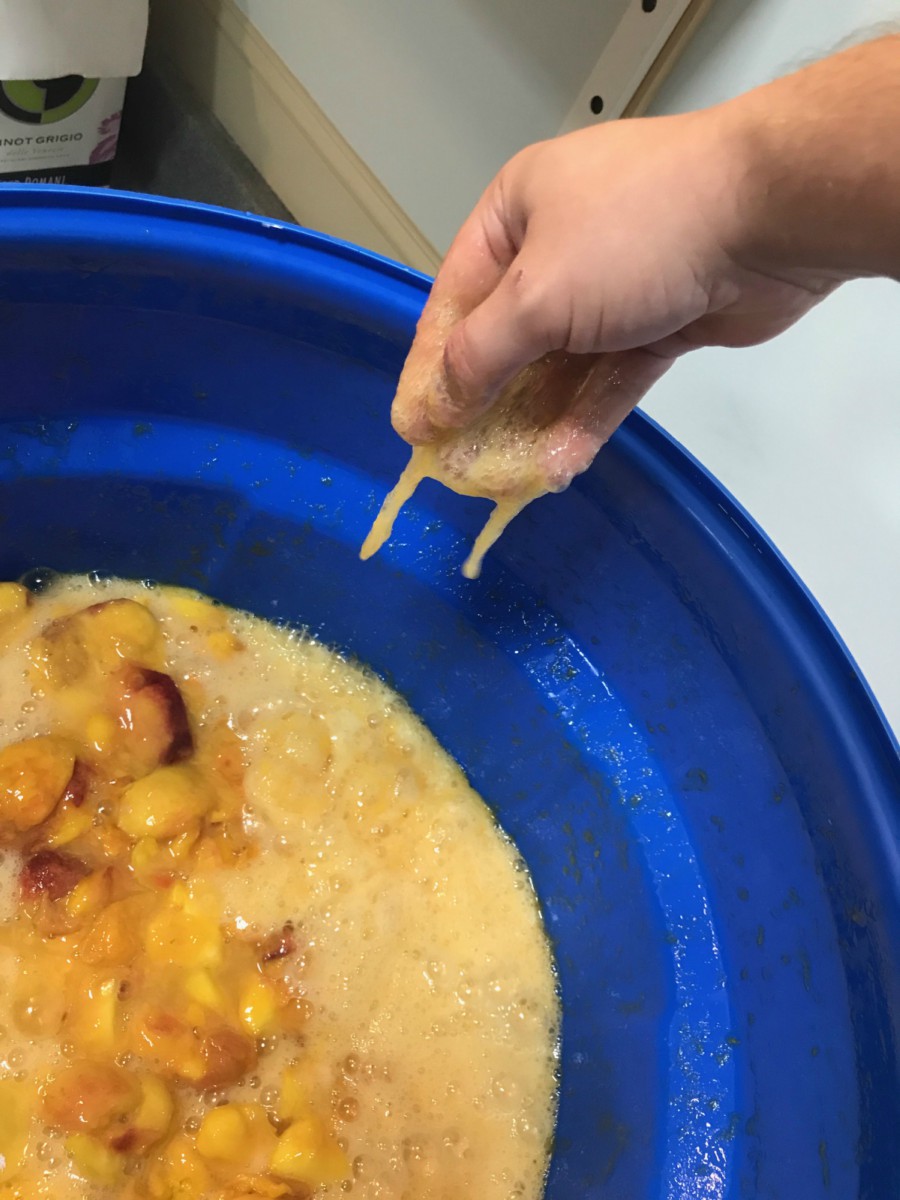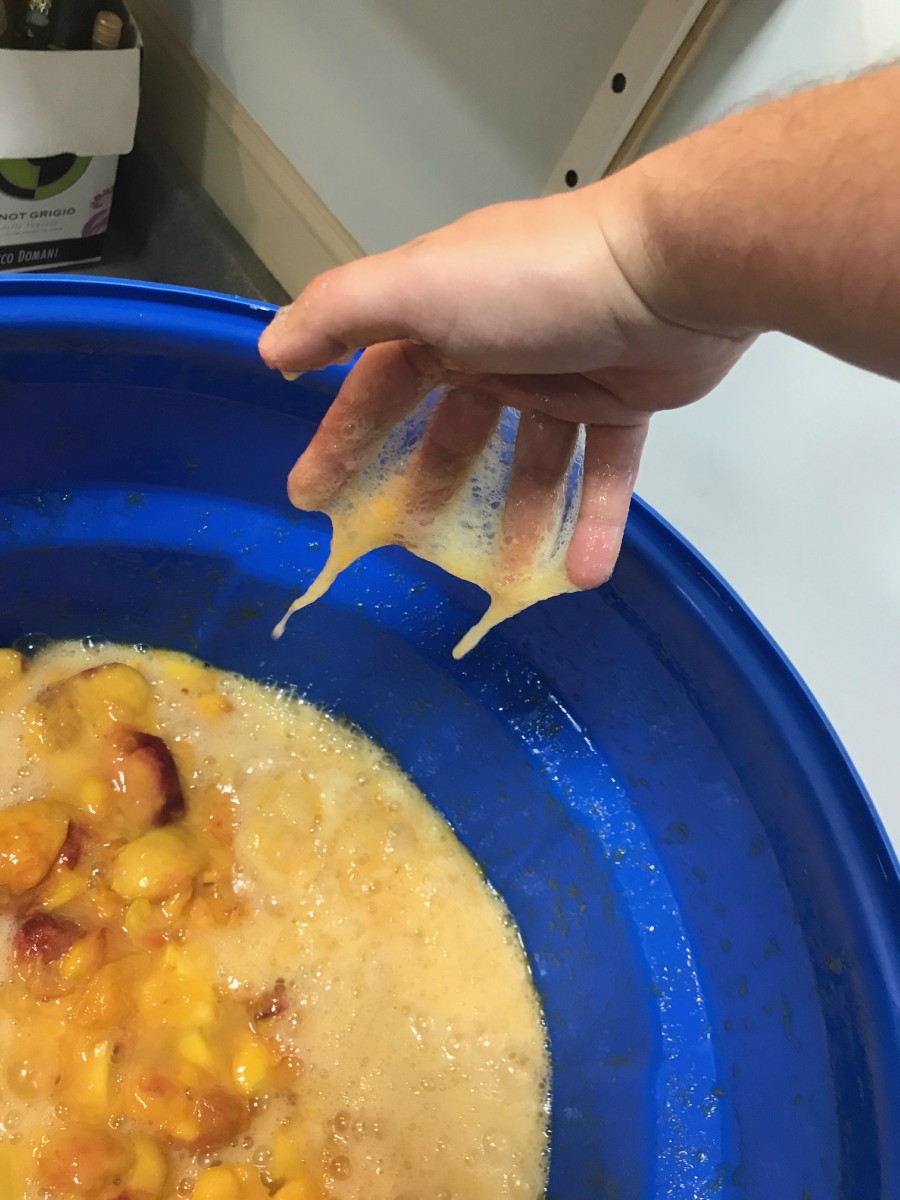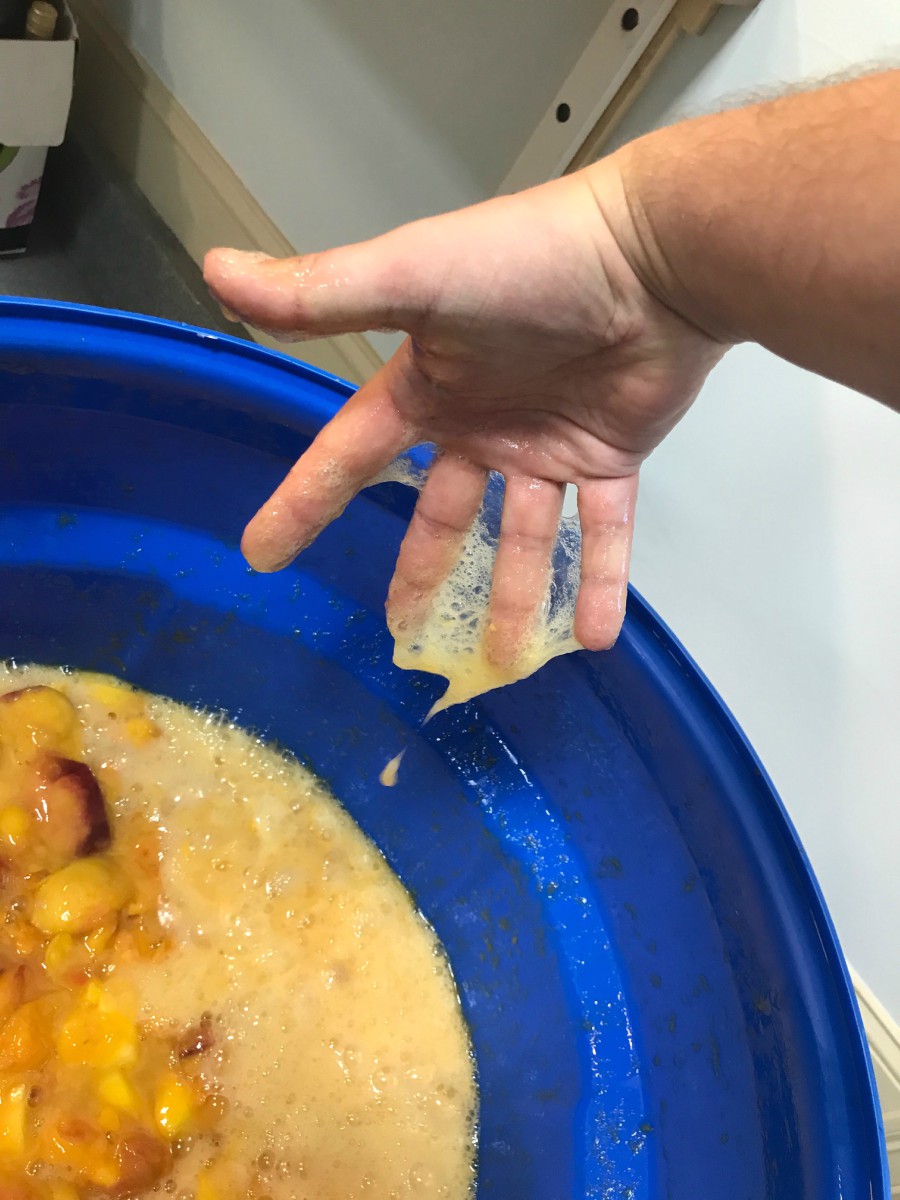Johnsmyname
Junior
- Joined
- Sep 26, 2017
- Messages
- 11
- Reaction score
- 0
Hi All, this is my first post here. I'm new to the forum, but not new to fermenting or making wines/beer.
I picked all my late season peaches and ended up with about 20+ gallons on mashed fruit. The next day I check on it and it has turned into a very very thick goo. I've never seen anything like it???
Here's what I did...
- Removed pits and squished peaches by hand into barrel.
- Added pectic enzyme and let sit for an hour.
- Dissolved Yeast Nutrient in a quart of boiling water and added to barrel.
- Proofed x4 packets of D47 yeast into 250ml of 100F water for 30 min, then pitched into barrel.
I can't figure it out? It's the first time using the barrel, but it is says it's chemical resistant and FDA Food Contact Surface safe. My Pectic Enzyme was a year or 2 old and not kept in fridge, but that wouldn't cause this. Is this some strange infection? Is my mash ruined, PLEASE HELP!!
There's almost no liquid, it's thick like this to the bottom...




I picked all my late season peaches and ended up with about 20+ gallons on mashed fruit. The next day I check on it and it has turned into a very very thick goo. I've never seen anything like it???
Here's what I did...
- Removed pits and squished peaches by hand into barrel.
- Added pectic enzyme and let sit for an hour.
- Dissolved Yeast Nutrient in a quart of boiling water and added to barrel.
- Proofed x4 packets of D47 yeast into 250ml of 100F water for 30 min, then pitched into barrel.
I can't figure it out? It's the first time using the barrel, but it is says it's chemical resistant and FDA Food Contact Surface safe. My Pectic Enzyme was a year or 2 old and not kept in fridge, but that wouldn't cause this. Is this some strange infection? Is my mash ruined, PLEASE HELP!!
There's almost no liquid, it's thick like this to the bottom...




Last edited:





























![[Upgraded] 9Pcs Tree Root Growing Box with Drain Holes, Half Transparent Plant Rooting Propagation Ball & Metal Core Twist Ties, for Fast Propagation Plants (Size M)](https://m.media-amazon.com/images/I/514MWQxtWOL._SL500_.jpg)













